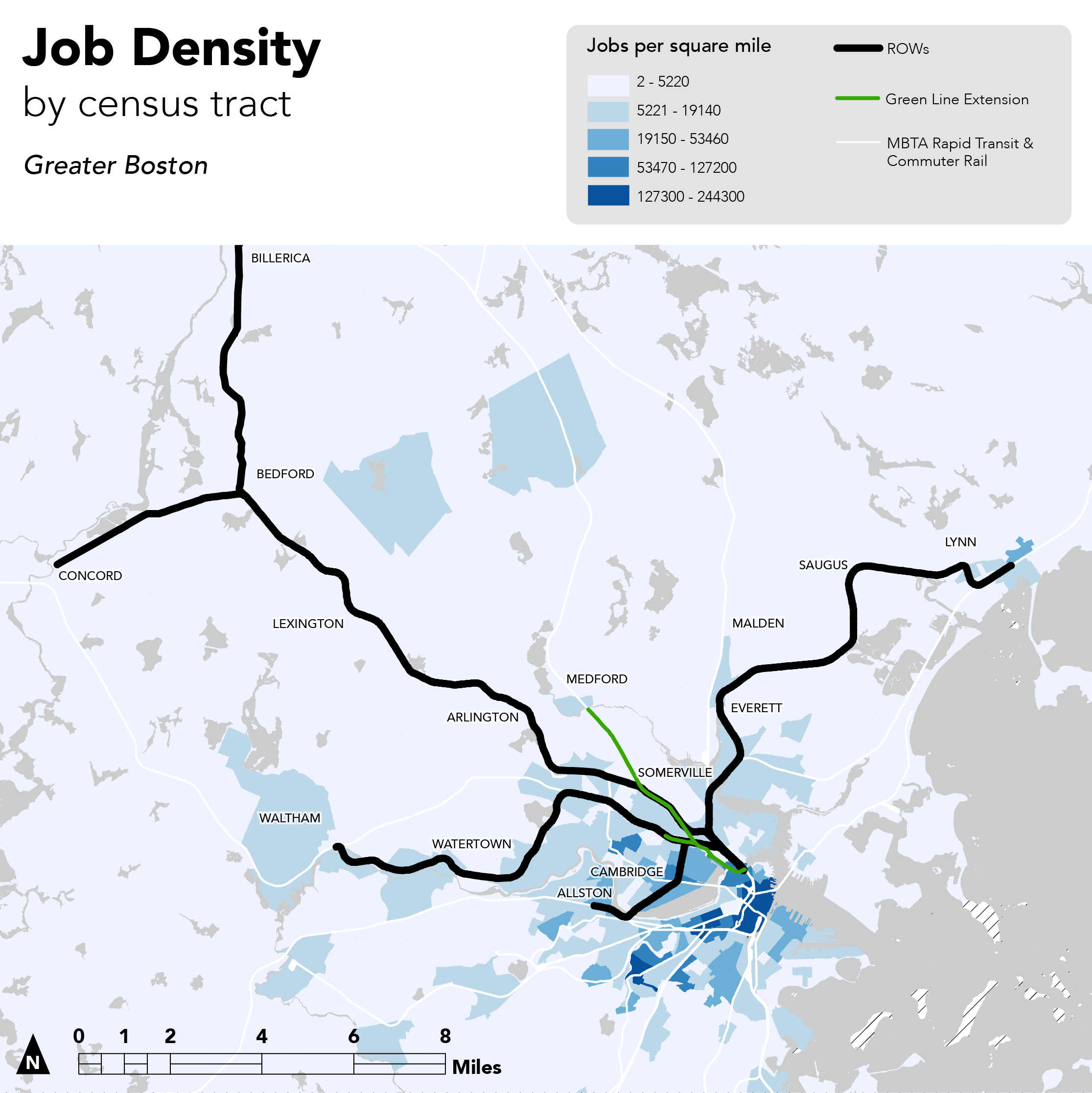
Rails to Trails to Rails: Analyzing Historic Rights-Of-Way in Greater Boston
The four historical rail rights-of-way analyzed in this project. Most of these are now recreational trails.
Greater Boston, MA
As Greater Boston, a growing and increasingly congested metro area, seeks to improve and expand its transit system, historic rail corridors—many currently abandoned—represent cost-effective opportunities for increasing future transit accessibility. This project analyzes four rights-of-way which historically had passenger rail service for future transit feasibility. Demographic and economic statistics from the American Community Survey and Longitudinal Employer-Household Dynamics are used to determine the characteristics of the areas served by these ROWs. The Grand Junction Railroad ROW seems to be the most appropriate for Green Line Extension-style transit. However, other ROWs show promise as new Bus Rapid Transit service or commuter rail. Completed for 11.188 - Introduction to Spatial Analysis.
Statistics within ¼-mile buffer of the right-of-way



